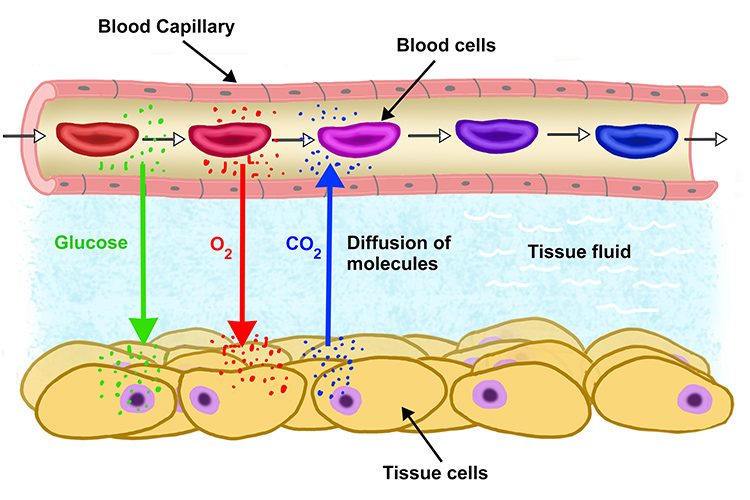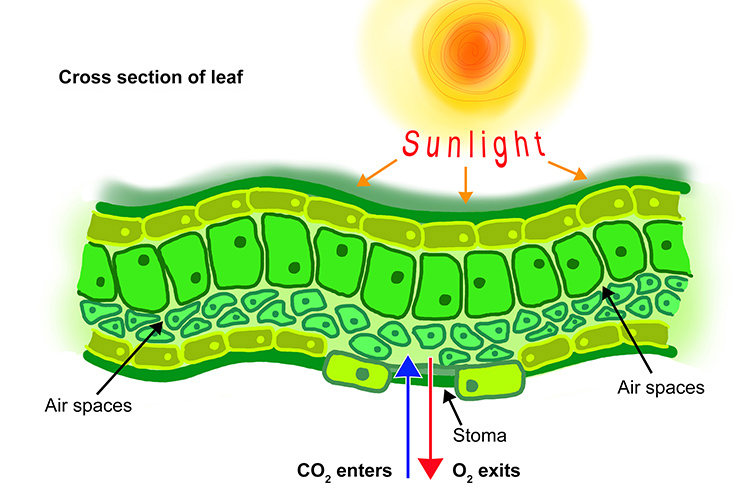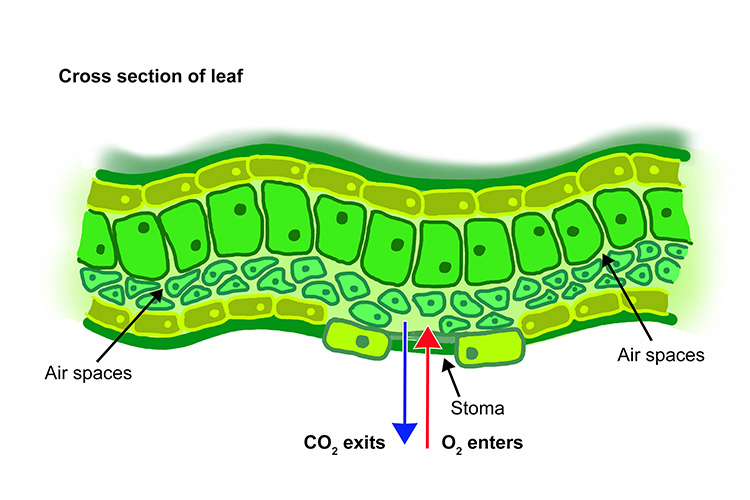Diffusion in biology
In biology, diffusion explains how useful materials (like oxygen) and waste products (such as CO2) enter and leave cells. Without diffusion, respiration and photosynthesis couldn’t take place.
Diffusion is essential for life
Humans
In humans, respiration takes place in the lungs and in all living cells.
Gaseous exchange in the lungs
Gaseous exchange in the lungs takes place in tiny air sacs called alveoli. (NOTE: alveoli is plural, alveolus is singular). Carbon dioxide diffuses out of the red blood cells and into the alveolus, while oxygen diffuses out of the alveolus and into the bloodstream. The gases do this by moving through the very thin walls of tiny blood vessels called capillaries.

Cellular respiration
After the blood has left the lungs, it reaches the rest of the body where cellular respiration occurs. Oxygen, carbon dioxide and glucose move in and out of and the blood stream by diffusion.

Plants
Plants also exchange gases through diffusion during photosynthesis and respiration.
Photosynthesis
When photosynthesis occurs, carbon dioxide diffuses into the leaf through the stomata (pores, or tiny holes, in the leaf) while oxygen moves out of the leaf in the same way. NOTE: stomata is plural, stoma is singular.

| 6CO2 | + | 6H2O | → | C6H12O6 | + | 6O2 |
| Carbon dioxide | + | water | → | glucose | + | oxygen |
Respiration
When plants respire, the opposite is true: oxygen diffuses into the leaf and carbon dioxide is given out through the stomata.

C6H12O6 + 6O2 → E + 6CO2 + 6H2O
Glucose + oxygen → energy (ATP) + carbon dioxide + water




